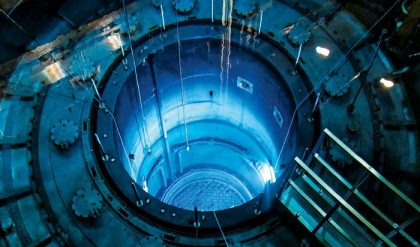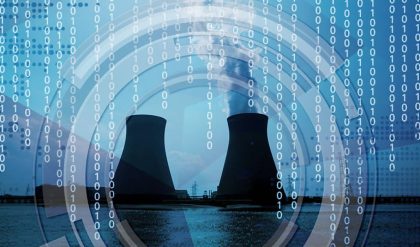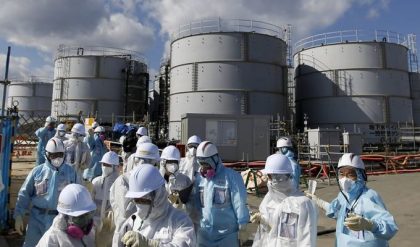
The Kashiwazaki-Kariwa Nuclear Power Plant is a large, modern (housing the world’s first ABWR) nuclear power plant on a 4.2 square kilometer site including land in the towns of Kashiwazaki and Kariwa in the Niigata Prefecture, Japan on the coast of the Sea of Japan, from where it gets cooling water. The plant is owned and operated by The Tokyo Electric Power Company (TEPCO).
It is the largest nuclear generating station in the world by net electrical power rating. It was near the epicenter of the strongest earthquake to ever occur at a nuclear plant, the Mw 6.6 July 2007 Chūetsu offshore earthquake. This shook the plant beyond design basis and initiated an extended shutdown for inspection, which indicated that greater earthquake-proofing was needed before operation could be resumed.
The nuclear power plant was completely shut down for 21 months following the earthquake. On May 9, 2009, one unit (Unit 7) was restarted, after seismic upgrades. A second unit was restarted in August 2009, Unit 6.
Reactors
There are seven units, which are all lined up along the coast line. Numbering starts at Unit 1 with the south-most unit up to Unit 4, then there is a large green space in between Unit 4 and 5, then it continues with Units 6 and 7, the newest of the reactors.
The power installation costs for units at this site well reflect the general trend in costs of nuclear plants. Capital costs increased through the 1980s but have become cheaper in modern times. The last two units were the first Advanced Boiling Water Reactors (ABWRs) ever built.
| KK – 1 | KK – 2 | KK – 3 | KK – 4 | KK – 5 | KK – 6 | KK – 7 | |
| Reactor Type | BWR | BWR | BWR | BWR | BWR | ABWR | ABWR |
| Net Power (MW) | 1,067 | 1,067 | 1,067 | 1,067 | 1,067 | 1,315 | 1,315 |
| Gross Power (MW) | 1,100 | 1,100 | 1,100 | 1,100 | 1,100 | 1,356 | 1,356 |
| Installation Costs(1,000 yen/kW) | 330 | 360 | 310 | 310 | 420 | 310 | 280 |
Performance
Such a large plant size has several economic advantages, one of these advantages is very little effect on net power production due to refueling outages of individual units. A smooth transition was seen in the power production history of the plant up through the time the last two units were built. Unfortunately, since completion the plant has seen two events that caused the entire plant to be shut down. The last of these two events is ongoing and data is not available yet, data for the rest of the plant’s history is shown below:
| UNIT 1 | UNIT 2 | UNIT 3 | UNIT 4 | UNIT 5 | UNIT 6 | UNIT 7 | TOTAL | |
| 1985 | 4.960 | 4.960 | ||||||
| 1986 | 6.704 | 6.704 | ||||||
| 1987 | 9.195 | 9.195 | ||||||
| 1988 | 6.960 | 6.960 | ||||||
| 1989 | 6.442 | 1.041 | 7.484 | |||||
| 1990 | 5.987 | 5.386 | 7.911 | 19.284 | ||||
| 1991 | 9.032 | 6.642 | 7.093 | 22.767 | ||||
| 1992 | 6.958 | 9.047 | 0.053 | 6.977 | 23.035 | |||
| 1993 | 6.874 | 7.213 | 6.488 | 0.012 | 9.238 | 29.825 | ||
| 1994 | 7.020 | 7.291 | 7.264 | 6.040 | 7.155 | 34.771 | ||
| 1995 | 9.235 | 7.697 | 9.254 | 6.182 | 7.508 | 39.877 | ||
| 1996 | 6.814 | 8.811 | 7.922 | 8.068 | 7.906 | 5.663 | 0.058 | 45.242 |
| 1997 | 7.900 | 7.284 | 8.016 | 7.517 | 8.919 | 10.161 | 8.128 | 57.926 |
| 1998 | 6.176 | 8.142 | 6.748 | 9.259 | 7.353 | 10.702 | 9.716 | 58.095 |
| 1999 | 9.199 | 8.209 | 9.028 | 8.142 | 7.772 | 9.710 | 8.445 | 60.505 |
| 2000 | 7.715 | 8.140 | 7.945 | 6.919 | 7.043 | 9.412 | 11.240 | 58.413 |
| 2001 | 7.071 | 7.595 | 6.986 | 5.591 | 9.199 | 9.270 | 10.078 | 55.790 |
| 2002 | 5.906 | 5.866 | 5.576 | 9.240 | 8.191 | 11.504 | 7.990 | 54.273 |
| 2003 | 0.000 | 0.000 | 0.000 | 4.186 | 1.503 | 8.401 | 5.778 | 19.869 |
| 2004 | 6.497 | 4.660 | 6.550 | 5.624 | 6.135 | 8.635 | 10.805 | 48.906 |
| 2005 | 3.126 | 6.388 | 6.062 | 7.192 | 6.853 | 11.126 | 7.977 | 48.725 |
| 2006 | 6.299 | 9.331 | 7.331 | 2.817 | 8.400 | 8.447 | 8.166 | 50.792 |
| 2007 | 3.165 | 1.830 | 5.054 | 5.061 | 0.0 | 3.758 | 6.358 | 25.226 |
| 2008 | 0.0 | 0.0 | 0.0 | 0.0 | 0.0 | 0.0 | 0.0 | 0.0 |
2002 Scandal shut downs
The reactors at the KK plant were shut down one by one after the discovery of deliberate falsification of data. The first one was taken offline September 9, 2002 and the last one was taken offline January 27, 2003. The newest units, the more inherently safe ABWRs, were taken back online the quickest and suffered the smallest effect. Units 1, 2, and 3 on the other hand, generated no electricity whatsoever during the entire fiscal year of 2003.
Fuel
All reactors continue to use low-enriched Uranium as the nuclear fuel, however, there have been plans drafted by Tepco to use MOX fuel in some of the reactors by the permission of the Japanese Atomic Energy Commission (JAEC). A public referendum in the Kariwa village in 2001 voted 53% against use of the new fuel. After the 2002 Tepco data fabrication scandals, the president at the time, Nobuya Minami, announced that plans to use the MOX fuel at the KK plant would be suspended indefinitely.



